| Abobra tenuifolia. The Cranberry Gourd is a native of South America, specifically Argentina, Brazil and Uruguay. The egg-shaped fruit is edible. If you are thinking of growing it you need male and female plants. |
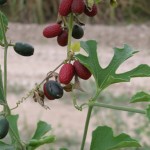 |
| Achyrachaena mollis, Blow Wives. The roasted seeds were eaten by California Indians. |
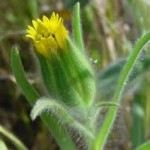 - Blow Wives
|
| Aegle marmelos, Bael, is a native of Southeast Asia, from India to the Philippines. The Bael fruit has a smooth, hard woody shell with a gray, green or yellow peeling. It takes about 11 months to ripn reaching the size of a grapefruit. The yellow pulp is aromatic smelling like marmalade and roses combined. It is eaten fresh or dried, the juice is used to make a drink like lemonade. Leaves and small shoots are used as salad greens. Twigs are used as chew sticks |
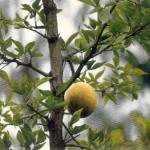 |
| Allenrolfea occidentalis, Iodine Bush, Pickleweed. Young stems are edible raw in limited amounts because of being salty. Used as a cooked green. The seeds are also edible. |
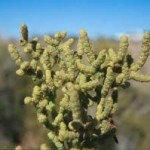 - Iodine Bush
|
| Andromeda polifolia, Bog Rosemary. A cold water tea made from the mascerated plant was drank by the Ojibway Indians. Do NOT make a tea using hot water. That will make the tea toxic. |
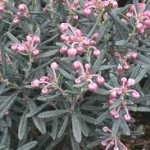 - Bog Rosemary
|
| Anemonella thalictroides, Rue Anemone. The starchy root is edible after cooking. |
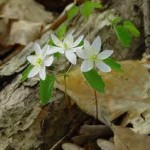 - Rue Anemone
|
Anethum graveolens, dill. Where would pickles be without dill? I use dill in many supper time concoctions, usually involving cucumbers.
|
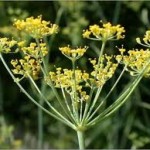 - Dill
|
| Athysanus pusillus, Sandweed. Its small seeds have been used as food. |
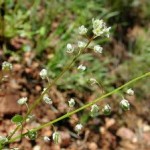 - Sandweed
|
Benincasa hispida, White Gourd, eaten raw or cooked, young or old, used as a vegetable; flowers and leaves steamed as a vegetable, seeds cooked.
|
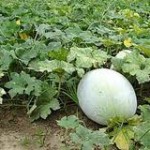 - White Gourd
|
| Bertholletia excelsa, the Brazil Nut. This common edible needs little introduction. From South American the tree itself grows to nearly 200 feet high and is named after French chemist Claude Louis Berthollet. |
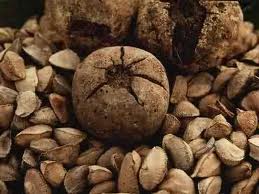 Brazil nut Brazil nut |
| Butomus umbellatus, flowering rush. A native of Eurasia the Flowering rush is become endangered in some areas of its native range but a pest in areas where it has been introduce, such as the Great Lakes. The root can be boiled and eaten. |
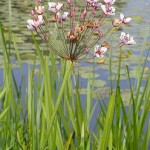 Flowering Rush Flowering Rush |
| Brasenia schreberi, Water Shield. This plant is common in Florida. It is odd in that its underleaf and stem are covered in a clear gel, making identification easy. To read more about the Water Shield click here. |
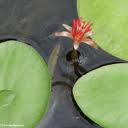 - Water Shield
|
Calla palustris, Water Arum, a northern tier species. To read more about the Water Arum click here.
|
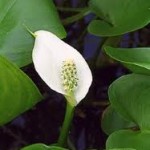 - Water Arum
|
| Calypso bulbosa, Deer Orchid, Fairy Slipper. The corm-like root was eaten by Indians. |
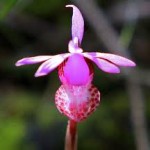 - Deer Orchid
|
| Carnegiea gigantea, Saguara, among the most famous of the cactus clan, and with quite edible fruit. |
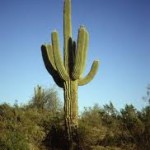 - Saguara
|
| Chamaedaphne calyculata, Leatherleaf. Leaves mashed in cold water, drunk as a cold tea by the Ojibway Indians. |
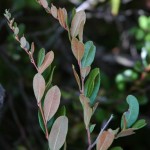 - Leatherleaf
|
| Crithmum maritimum, Samphire. the salty leaves can be pickled in vinegar, added to salads, used like capers; flowers in salads. Often chopped and mixed with olive oil and lemon juice to be used as a salad dressing. |
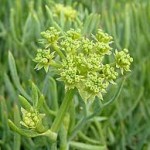 - Samphire
|
| Cycloloma atriplicifolium, Winged Pigweed. The seeds can be ground and used for mush or as cakes. |
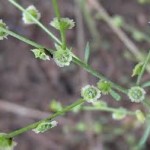 - Winged Pigweed
|
| Cydonia oblonga, quince. My mother has one growing outside her front door. When it takes over the doorstep it gets a trim. |
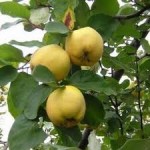 - Quince
|
| Enhalus acoroides, Tape Seagrass, is a sea grass, not a seaweed and not algae, but a grass that grows in tidal saltwater. The chestnut tasting seeds are eaten |
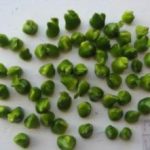 |
| Eleiodoxa conferta, Kelubi, is a Southeastern Asia palm that dies upon reaching maturty. The heart is edible and the fruit is pickled or used as a substitute for tamarind or made into sweets. |
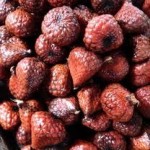 |
| Erigenia bulbosa, Harbinger of Spring. The small root is edible raw. |
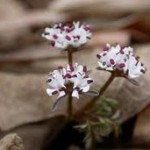 - Harbinger of Spring
|
| Floerkea proserpinacoides, False Mermaid. The spicy plant above ground is eaten raw. |
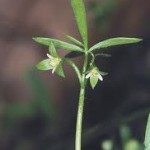 - False Mermaid
|
Foeniculum vulgare, fennel. I can’t cook without fennel.
|
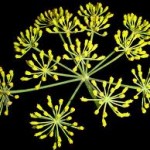 - Fennel
|
Ginkgo biloba. I first saw them in Japan and later outside Bailey Hall at the (then) University of Maine campus, Gorham, Maine. Now there’s one not a quarter of a mile away from me here in Florida. To read more about the ginkgo click here.
|
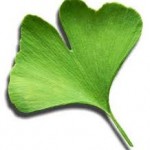 - Ginkgo
|
| Glaux maritima, Sea Milkwort. Young shoots edible raw, leaves and stems pickled. |
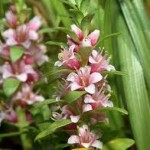 - Sea Milkwort
|
| Hablitzia tamnoides, Spinach Vine, Caucasian Vine, related to Chenopodiums, shoots and leaves are edible, raw or cooked. |
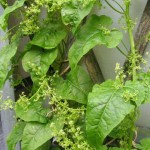 |
| Hesperocallis undulata, Desert Lily. Large tubers are edible but grow deep in difficult soil. |
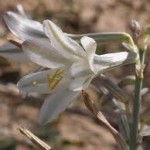 - Desert Lily
|
| Heteromeles arbutifolia, Toyon. Bitter fruit edible, should be cooked, roasting works. Can be dried and ground into a meal, also mashed, mixed with honey and water to ferment into cider. Leaves toxic. |
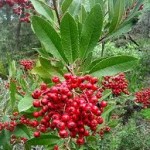 - Toyon
|
| Hippuris vulgaris, Marestail. Tips can be boiled. |
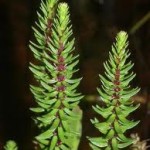 - Marestail
|
| Honckenya peploides, Sandwort, Sea Chickweed. Whole plant edible raw or cooked. Is not a good flavor. Can be fermented like sauerkraut. Berries eaten with fat. |
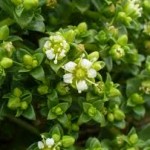 - Sandwort
|
Hydrilla verticillata poses a bit of a mystery. You can buy it in health food stores powdered but there are no ethnobotanical uses to guide us on how to prepare it. Suggestions welcomed.
|
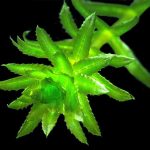 - Hydrilla
|
| Isomeris arborea, Bladderpod. Pods edible after cooking. |
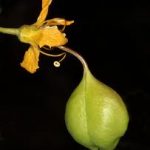 - Bladderpod
|
Levisticum officinale, Lovage, an herb garden staple.
|
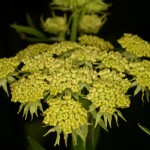 - Lovage
|
| Limonia acidissima,Wood-Apple, is a native of Southeast Asia particulary in the India area. The pulp is eaten out of hand, made into drinks, or jam. |
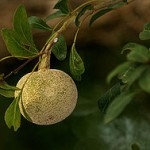 |
Maclura pomifera, the Osage-Orange, almost universally reported as not edible. A native to central North America the seed kernels are edible raw or roasted.
|
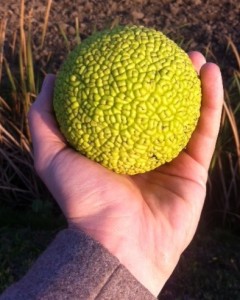 Osage-Orange |
| Medeola virginiana, Indian Cucumber, a well-known edible in the eastern half of North America. |
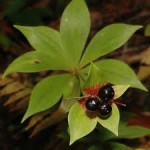 - Indian Cucumber
|
| Modiola caroliniana, Carolina Bristlemallow survives locally by growing low in lawns. Resembles flat leaf parsley. To read more click here. |
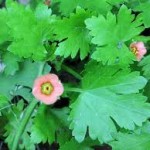 - Carolina Bristlemallow
|
| Muntingia calabura, Jamaican Cherry though it is a native of southern Mexico. Fruit is eaten out of hand, sweet juicy, use to make jellies, jam, tarts, pies and added to cold cereal as as other fruit is. Yellow and red forms, very hight in vitamin C, leaves are used to make a tea. |
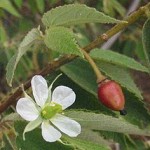 |
| Myrrhis odorata, Sweet Cicely, leaves raw in salads, added to soups and stews, garnish for fish dishes or brewed into tea. Used in candy making. Roots eaten after boiling, served with oil or candied, seeds used as a spice and to favor chartreuse. |
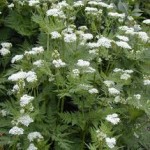 - Sweet Cicely
|
| Nandina domestica, Nandina. Barely edible, leaves cooked many times and seedless fruit pulp useable. To read more click here. |
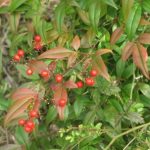 - Nandina
|
| Nemopanthus mucronatus, Mountain Holly, fruit eaten by Indians. |
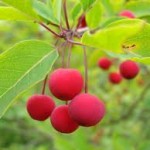 - Mountain Holly
|
Neogomesia agavioides, red fruit edible but very rare.
|
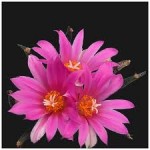 - Neogomesia agavioides
|
| Nypa frutescens is an Asiatic palm tree with edible fruit called Nipa. In the Philippines the sap is to make sugar, alcohol, and vinegar. It’s flowers are boiled to make a sweet syrup. Unripe seeds are eaten raw and used to flavor ice cream. The fronds are used for thatching. |
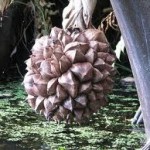 |
Obregonia denegrii, white fruit edible.
|
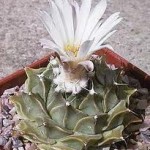 - Obregonia denegrii
|
| Onoclea sensibilis, Sensitive Fern, rhizome eaten by Indians, young shoots of a variation called interrupta boiled as a green. |
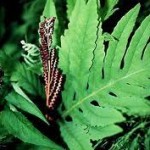 - Sensitive Fern
|
| Orontium aquaticum, Golden Club. Roots dried and ground into flour, seeds dried and boiled in several changes of water until paltable, same with flowers. |
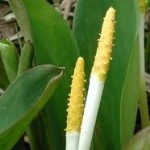 - Golden Club
|
| Osmaronia cerasiformis, Oso Berry. Fruit edible raw, bitter, cooking improves flavor. |
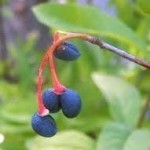 . .- Oso Berry
|
| Oxydendrum arboreum, Sourwood. Young, tender leaves edible raw. |
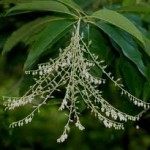 - Sourwood
|
| Peltiphyllum peltatum, Indian rhubarb. Peeled leafstalk edible raw or cooked. |
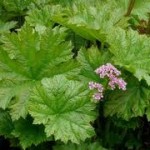 - Indian rhubarb
|
| Peraphyllum ramosissimum, Squaw Apple. The bitter ripe fruit is edible. |
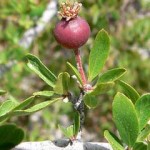 Squaw Apple |
| Perilla frutescens, Perilla, one species, three varities, wildly used in Asian cooking. |
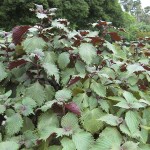 Perilla |
| Peumus boldus, Boldo, is native to Chile. Its leaves are used similar to a bay leaf for flavoring although the flavor is different than a bay leaf. Boldo’s small, green fruit is also edible. The flavor is similar to epazote. The leaves also make an herbal tea which is sold commercially. |
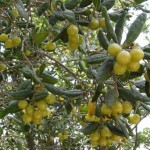 Boldo |
| Pholisma arenarium, endangered. The root is edible. |
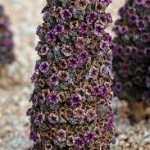 - Pholisma arenarium
|
| Piloblephis rigida, Florida Pennyroyal. Very intense, found in scrub land, to read more click here. |
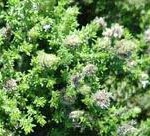 - Florida Pennyroyal
|
| Platycodon grandifolus, Balloon Flower, roots, leaves and blossom edible raw. |
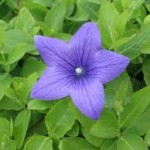 - Balloon Flower
|
| Platystemon californicus, Cream Cups, Leaves were cooked by Indians. |
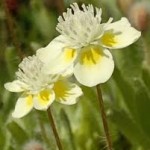 - Cream Cups
|
| Pteridium aquilinum, Bracken Fern, to read more click here. |
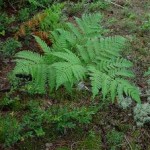 - Bracken Fern
|
| Ravenala madagascariensis, Traveler’s Palm, bright metalic seeds are quite edible. To read more click here. |
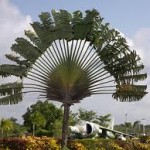 - Traveler’s Palm
|
Sclerocactus mesae-verdae, federally endangered and protected, fruit eaten by Indians.
|
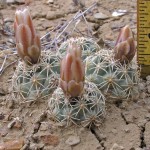 - Sclerocactus mesae-verdae
|
Serenoa repens, Saw Palmetto. The infamous…. the fruit tastes like rotten cheese soaked in tobaccon juice, and $70 million business in Florida. To read more, click here.
|
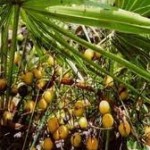 - Saw Palmetto
|
| Stangeria eriopus. Books a century old or older say the Cycad seeds are edible after cooking. I would be wary. It is a toxic family. |
I would have a picture here but my program absolutely will not allow it. |
Tamarindus indica, the tamarin, a spice that works is way into your kitchen.
|
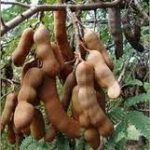 - Tamarin
|
| Umbellularia californica, California Laurel, Oregon Myrtle, root bak makes a tea, leaves used like a bay leaf. Nut is edible raw or roasted, its spicy envelope is also edible. |
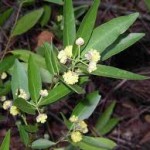 - Umbellularia californica
|

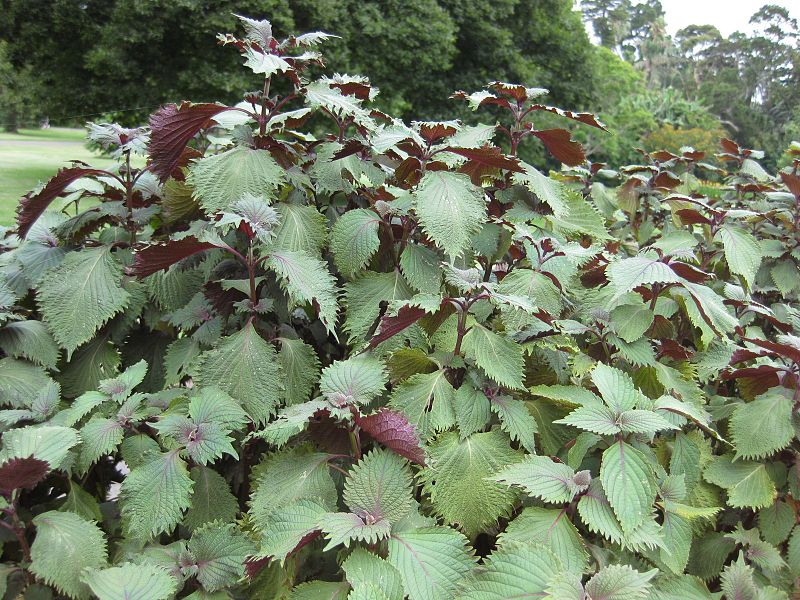
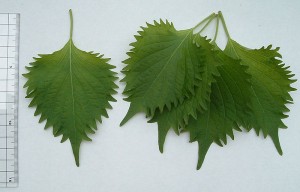
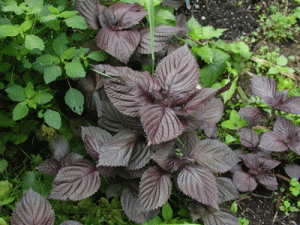
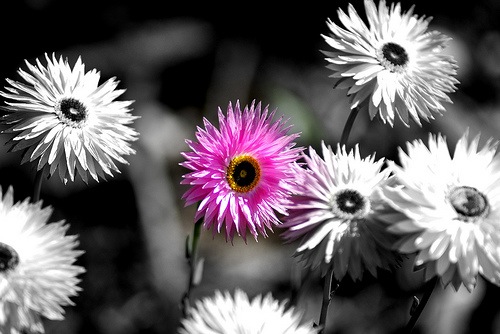















































 .
.














